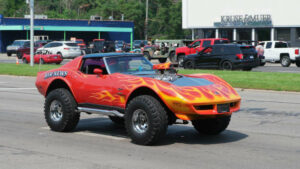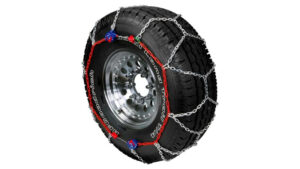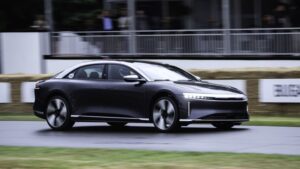After receiving checks for 50,000 fake dollars last week and letting you know how we would spend it on brand-new cars, we decided to switch things up a bit and jump into our DeLorean for a trip back to 1985.
Why 1985? Well, we’re also taking a trip back to the grim early days of the pandemic when we were stuck in our houses with scarce automotive news to cover and nowhere to drive our test cars. In that original post, What we’d drive in 1985, we didn’t really put a price limit on anything. This time around, we do. Specifically, I wanted to see what you could buy for the 1985 equivalent of today’s $50,000. According to the CPI Inflation Calculator, that would be $17,708, so let’s round up to $18,000.
As it turns out, 18 large wasn’t that much in 1985. A base BMW 318i sedan went for $17,220 and the only Cadillac you could buy was a Cimarron. So yeah, we won’t exactly be featured on “Lifestyles of the Rich and Famous” unless Robin Leach was impressed by a Merkur xR4ti (see above). On the other hand, basically every non-luxury vehicle is nowhere close to $18,000 and you’d struggle to option them up to that level. Ultimately this shows that luxury car prices have actually gone down in the last four decades, while volume-sellers have skyrocketed.
Like last week, there are two rules:
- The price when new has to be within $700 of the $17,000 (or the 1985 equivalent of last week’s $2,000). We can’t say “I’d spend $12,000 on the Chevrolet Monte Carlo SS up there and blow the rest on blow … I mean whatever else they blew their money on in 1985.”
- It has to be a new 1985 model year car.
OK, cue the Huey Lewis, onto our choices.
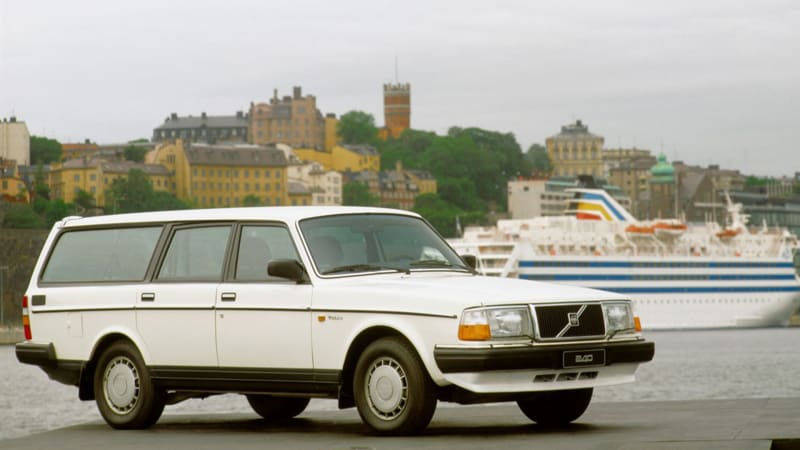
Volvo 240 GL Wagon
Senior Editor James Riswick: I recently purchased a car for my family, so I decided to apply the same search criteria for this 1985 car. It would mostly be my wife’s car since I mostly drive press cars (oh how I wish I could go back in time and sample press fleets of the past). We have a toddler, so a Nissan 300ZX is no good, and we want some utility but my wife prefers driving smaller cars. That last one nixed a BMW 318i and while the Saab 900 could probably do the trick, I opted for something else Swedish: the Volvo 240 GL Wagon. Sadly, the turbocharged GLT wagon was too expensive by $1,250 (and the sedan by $20), so I went with the mid-grade GL. It actually had a new engine for ’85, but with only 111 horsepower, it’d definitely be as slow as a meatball on a shallow incline. I’m sure I could talk my wife into getting the manual. I mean, I’m not even sure if she’d be down for driving a brick, but the choices are limited and hey, it’s actually really nice by ’85 standards. The GL had heated seats (yay Sweden!), power windows, a sunroof, power trunk release, plus the four-wheel disc brakes and other Volvo safetyness that was standard. Oh, and there’s an absurd 41.1 cubic-feet of space. Finally, she’d be able to tell all her 1985 friends that “In 30 years, these things are going to be cool, just wait and see.”
(P.S. You’re right Sven, the above 240 is not an ’85 240 GL, but an ’88 240 GL. You can tell because ’85 was the last year the American government insisted on sealed-beam headlamps. I couldn’t find an official picture of one of those. Close enough.)
.embed-container { position: relative; padding-bottom: 56.25%; height: 0; overflow: hidden; max-width: 100%; } .embed-container iframe, .embed-container object, .embed-container embed { position: absolute; top: 0; left: 0; width: 100%; height: 100%; }
Alfa Romeo GTV6
Senior Editor Jeremy Korzeniewski: Anyone with $16,500 burning a hole in their acid-washed pocket in 1985 could waltz into their nearest Alfa Romeo dealer (depending on where you lived, that may have been a sizable jaunt) and leave carrying the keys to a lovely GTV6. It looks older than it actually is — the Alfa Romeo Alfetta Coupe was originally released in 1975 with a swoopy-wedge shape penned by Giugiaro — but looking at many of the options in ’85 tells me that’s no bad thing. Why this Alfa Romeo?
We’ll start with the engine. Famed engineer Giuseppe Busso designed the 60-degree Alfa Romeo V6, and it went through many permutations throughout the years. In the GTV6 it displaced 2.5 liters and used a complex overhead-cam design and spun out 154 horsepower at 5,500 RPM and 152 lb-ft. It sent those ponies to the rear wheels through a five-speed manual transaxle, which leads us to the next heaping of praise: handling.
The Alfa Romeo GTV6 boasts ideal 50:50 weight distribution, courtesy in part to that rear-mounted transaxle. The front suspension is a double-wishbones setup with longitudinal torsion bars; at the rear is a de Dion tube, a Watts parallelogram link and inboard disc brakes. It’s a fantastic car to drive. And woo boy does it look lovely and Classically Italian in bright red with a tan leather interior.
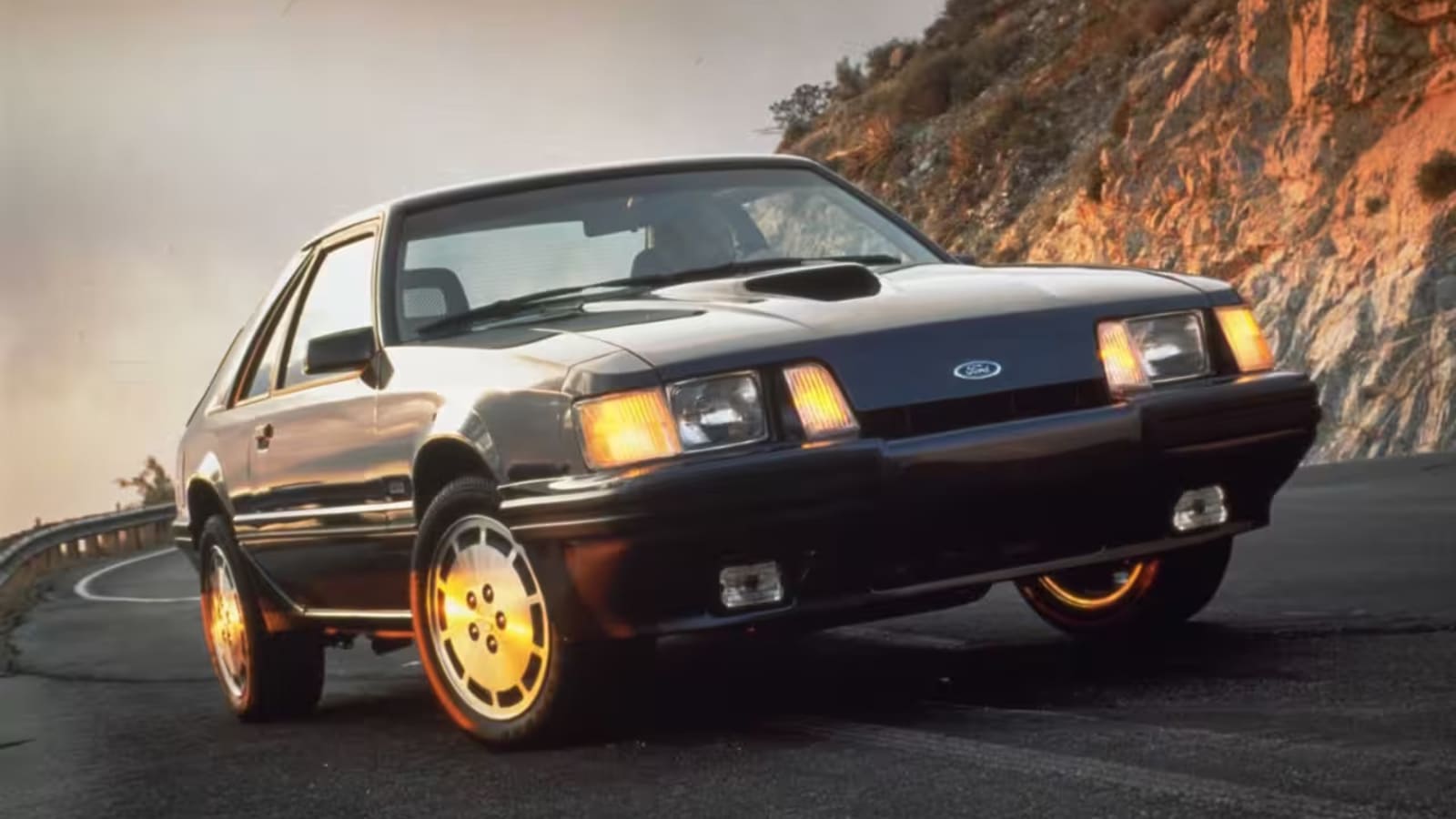
Ford Mustang SVO
Road Test Editor Zac Palmer: I’m sticking close to home with my original 1985 pick and going with the Ford Mustang SVO. I’ve always had a soft spot for this performance-focused turbocharged Mustang, and it just happens to fit the bill with an approximately $15,000 starting price. Add on a few choice options — air conditioning, power locks, power windows and more — and I have myself a pretty sweet ride that adheres to the price rules, too. I’d definitely go for the mid-model year update that boosts output up to 205 horses, but what really appeals to me about the SVO is its focus on going left, right and stopping. The SVO also got dedicated high-performance tires, stiffer shocks, quicker steering, four-wheel disc brakes and a revised rear axle ratio. That sounds like my kind of Mustang, just as the previous generation’s EcoBoost High Performance Package was one of my favorite versions. It’s a shame you can’t get a manual transmission with the new 2024 Mustang EcoBoost, but Ford sure was offering up an awesome package back in 1985.
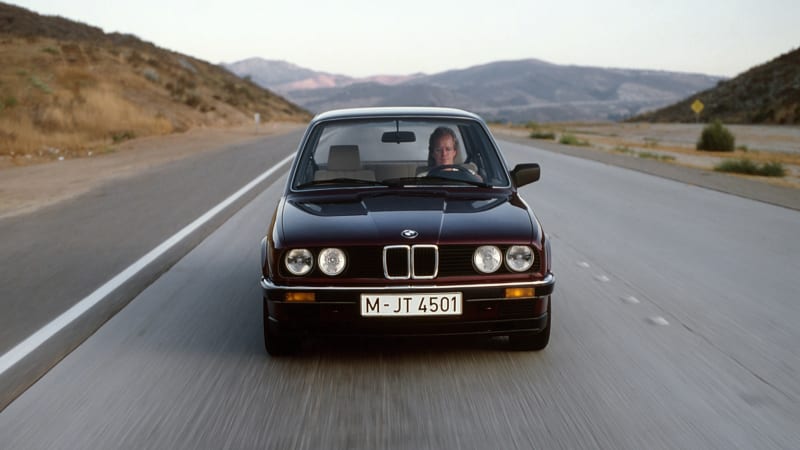
BMW 318i
Senior Editor, Green, John Beltz Snyder: The BMW 318i is nowhere near the performance benchmark of the E30 generation. It was the entry Bimmer of the time, and is the only one to come in under our $18,000 budget (at $16,430 for the coupe, $16,925 for the sedan, but that leaves a little room for options). Nonetheless, it’s a handsome car with good handling. As someone who enjoys the challenge of maintaining the momentum of a slower car, the M10 four-cylinder’s 101 horsepower is enough to have some fun in a car that weighs 2,400 pounds. This is also one of those cars that I’d simply enjoy staring at in my garage.
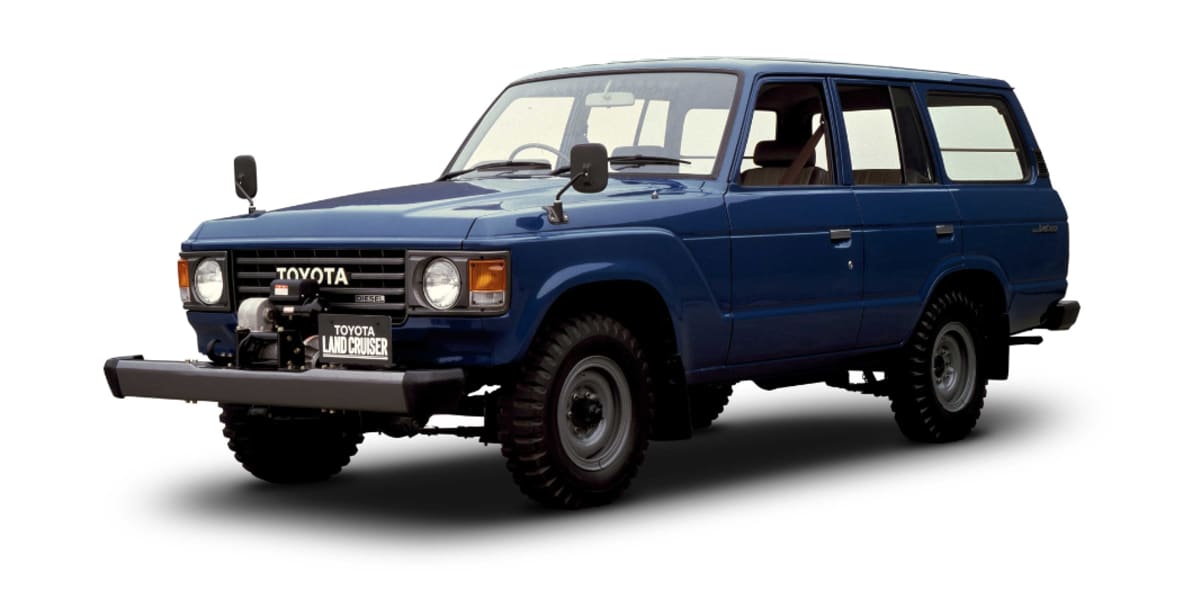
Toyota FJ60 Land Cruiser
Managing Editor Greg Rasa: This is an interesting price point because you could buy an astonishing number of vehicles for less than $18,000 back then. No, not a Porsche, but a lot of other things. A Buick Grand National? That was a mere 13 grand. A funky Merkur XR4Ti? It’s a lot closer to the mark at $16,361, but its available options are lost to the sands of time, so no idea if they’d goose up the price enough. And besides, Zac chose its Mustang SVO cousin, anyway. A Ford Bronco (the big one) was only $12,000, while a Jeep Grand Wagoneer was over budget. So how about a Toyota Land Cruiser? It is such an old-school SUV, with the JGW’s same sense of style — that’s what you call rugged good looks. The FJ60 started at $14,568, which falls well short of our price bracket, but load it with any and all options, and we’ll spend the rest in aftermarket equipment if we have to. Any generation Land Cruiser is cool, even though a 60-Series is known to be slow and heavy. And we didn’t know then what we know now: FJs are collectibles today.
No time machine necessary for this next one …

Three 1985 Chevy S-10s
Managing Editor Greg Rasa: Fact is, I’m the only one here who actually did buy a new vehicle in 1985. I was young, broke and needed cheap transportation to haul myself and my stuff cross-country to a new job the Pacific Northwest. The answer: a Chevy S-10.
It was a strip job, a farm or fleet truck, not like the fancy one shown here on the brochure cover. It was so, so basic: AM radio, hubcaps, five-speed, vinyl seats, vinyl floor coverings, painted bumpers, standard cab, 2WD. But it did have a long-bed and a V6, and the wheels turned. That’s all that mattered. Eventually it racked up 130,000 miles with zero problems, then got traded for another S-10 that was equally trouble-free. It was the Bic lighter of vehicles: Cheap, and it just worked.
The internet says MSRP was $5,990 (equivalent to $16,000 in modern money), though memory had it even cheaper. The Chevy S-10 is included in this fantasy exercise because if you were starting a small business in 1985 and needed a delivery fleet, you could’ve bought three of these on our $18,000 budget. You certainly cannot do that today at the constant-dollar equivalent of $50,000 (though if you could find them and they were unplagued by dealer markup, you could theoretically buy two base-model Ford Mavericks, a much nicer little truck). The S-10 was one of many vehicles in 1985 that were attainable by people with little to no means. Most manufacturers offered such basic transportation. Those days are pretty much gone.
Reader Replies via Twitter @therealautoblog
1985 Celica Supra pic.twitter.com/JObXSosmni
— dumb idiot (@dead_prick) May 15, 2023
Probably a Toyota Supra, nicely optioned?
— YEG Beer Judge (@YEGbeerjudge) May 15, 2023
Supra pic.twitter.com/t0xlsPSFKW
— Darby (@spyderpez) May 15, 2023
- SEO Powered Content & PR Distribution. Get Amplified Today.
- PlatoAiStream. Web3 Data Intelligence. Knowledge Amplified. Access Here.
- Minting the Future w Adryenn Ashley. Access Here.
- Buy and Sell Shares in PRE-IPO Companies with PREIPO®. Access Here.
- Source: https://www.autoblog.com/2023/05/18/heres-18000-1985/
- :has
- :is
- :not
- :where
- ][p
- $UP
- 000
- 1
- 10
- 11
- 12
- 13
- 14
- 15%
- 17
- 1985
- 20
- 22
- 220
- 23
- 24
- 250
- 26
- 27
- 28
- 30
- 50
- 500
- 7
- 8
- 9
- a
- Able
- About
- above
- Absolute
- actually
- add
- AIR
- Air Conditioning
- All
- also
- always
- am
- American
- an
- and
- answer
- any
- anyone
- anything
- appeals
- Apply
- approximately
- ARE
- around
- AS
- At
- Attainable
- automotive
- available
- back
- Bad
- bars
- base
- basic
- Basically
- BE
- because
- been
- beer
- Benchmark
- besides
- BIC
- Big
- Bill
- Bit
- blow
- BMW
- boasts
- boosts
- bought
- Bright
- Broke
- budget
- business
- but
- buy
- by
- call
- CAN
- cannot
- car
- carrying
- cars
- certainly
- challenge
- cheap
- cheaper
- Checks
- choice
- choices
- chose
- Close
- closer
- collectibles
- come
- complex
- Cool
- could
- cover
- CPI
- criteria
- Days
- dealer
- decades
- decided
- dedicated
- definitely
- delivery
- Depending
- Design
- designed
- DID
- displaced
- distribution
- do
- does
- dollars
- down
- drive
- driving
- Early
- editor
- else
- embed
- Engine
- engineer
- enjoy
- enough
- entry
- equally
- equipment
- Equivalent
- Ether (ETH)
- Even
- eventually
- Every
- exactly
- Exercise
- expensive
- fact
- fake
- Falls
- family
- fantastic
- FANTASY
- farm
- Favorite
- featured
- few
- Finally
- Find
- fit
- FLEET
- Floor
- Focus
- For
- Ford
- four
- friends
- front
- fun
- garage
- generation
- get
- getting
- Go
- going
- good
- Government
- Green
- grim
- had
- hand
- Handling
- happens
- Have
- heavy
- height
- her
- here
- Hidden
- High
- high-performance
- Hole
- Home
- houses
- How
- HTTPS
- i
- idea
- ideal
- if
- impressed
- in
- included
- inflation
- interesting
- interior
- Internet
- into
- IT
- Italian
- ITS
- Job
- John
- jpg
- judge
- jump
- just
- keys
- Kind
- Know
- known
- Land
- large
- Last
- Last Year
- Leads
- Leave
- left
- less
- letting
- Level
- Lewis
- lighter
- like
- LIMIT
- Limited
- LINK
- little
- ll
- load
- Locks
- Look
- looking
- LOOKS
- lost
- Lot
- machine
- manual
- Manufacturers
- many
- mark
- max-width
- May..
- mean
- means
- Memory
- mere
- model
- Modern
- Momentum
- money
- more
- most
- mostly
- much
- my
- National
- Near
- necessary
- needed
- New
- news
- next
- nice
- Nissan
- no
- now
- number
- object
- of
- offered
- offering
- official
- oh
- on
- ONE
- only
- Option
- Options
- or
- original
- originally
- Other
- our
- out
- output
- over
- Pacific
- package
- pandemic
- part
- past
- People
- performance
- pick
- picture
- plato
- Plato Data Intelligence
- PlatoData
- plus
- Point
- Porsche
- PoS
- position
- Post
- pounds
- power
- press
- pretty
- previous
- price
- Prices
- probably
- problems
- purchased
- put
- quicker
- Radio
- rasa
- ratio
- RE
- really
- receiving
- recently
- Red
- release
- released
- REST
- Rich
- Ride
- right
- Robin
- Room
- round
- rules
- s
- same
- say
- says
- Scarce
- Search
- SEC
- see
- sense
- sent
- setup
- shallow
- Shape
- she
- Short
- shown
- Shows
- simply
- since
- sizable
- slow
- small
- small business
- smaller
- So
- Soft
- some
- Someone
- something
- Space
- specifically
- spend
- Spot
- spun
- standard
- standards
- start
- started
- Starting
- sticking
- stopping
- Strip
- Struggle
- style
- such
- suspension
- Swedish
- sweet
- Switch
- taking
- Talk
- tell
- tells
- test
- than
- that
- The
- their
- Them
- then
- There.
- These
- they
- thing
- things
- this
- those
- though?
- Through
- throughout
- time
- tires
- to
- today
- too
- top
- toyota
- traded
- transportation
- trip
- truck
- Turned
- turns
- two
- Ultimately
- under
- Update
- us
- used
- utility
- Ve
- vehicle
- Vehicles
- vinyl
- volvo
- wait
- want
- wanted
- was
- wasn
- we
- week
- weighs
- weight
- WELL
- went
- were
- What
- whatever
- when
- which
- while
- WHO
- why
- wife
- windows
- with
- within
- Won
- Woo
- worked
- would
- year
- years
- you
- young
- youtube
- zephyrnet
- zero





